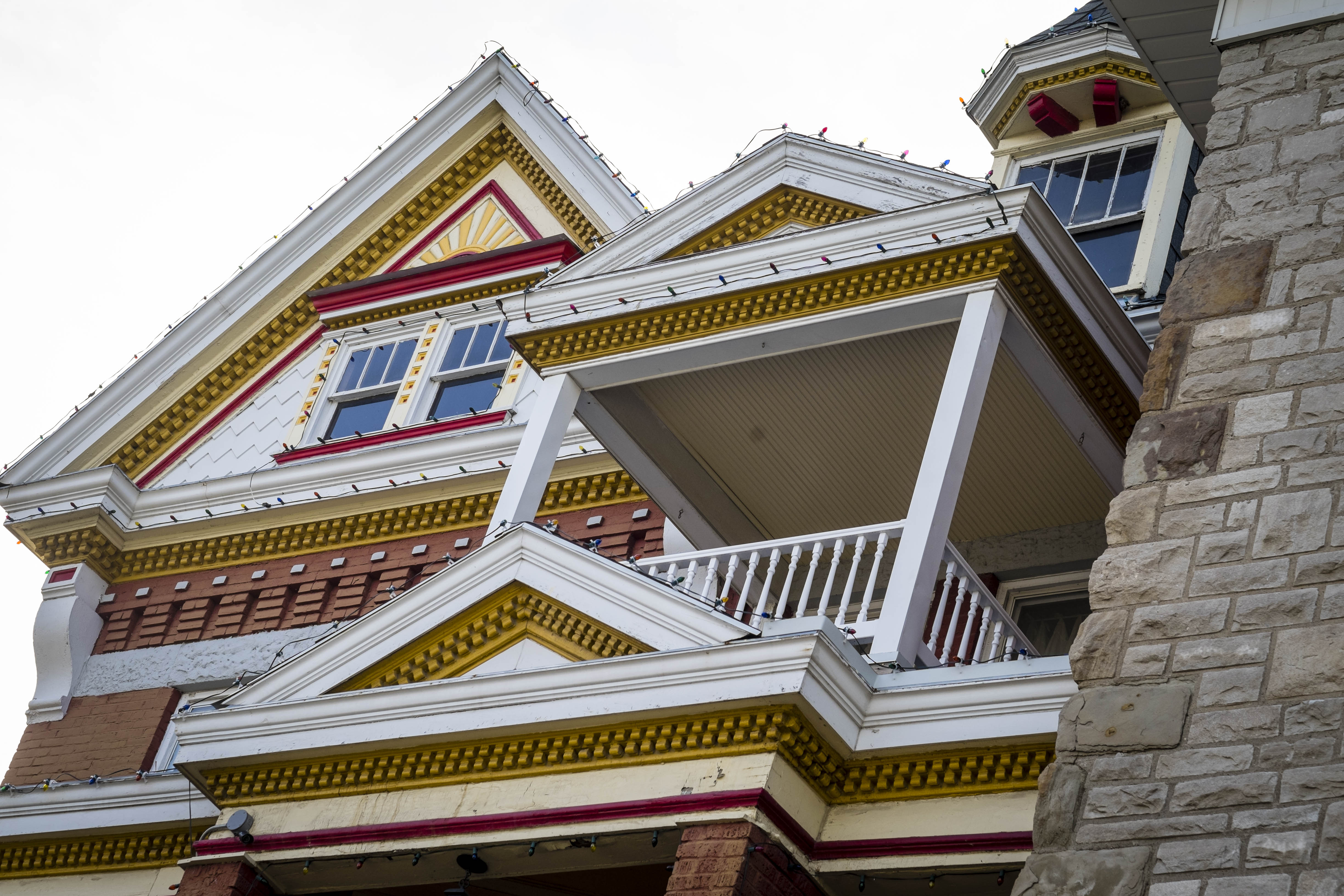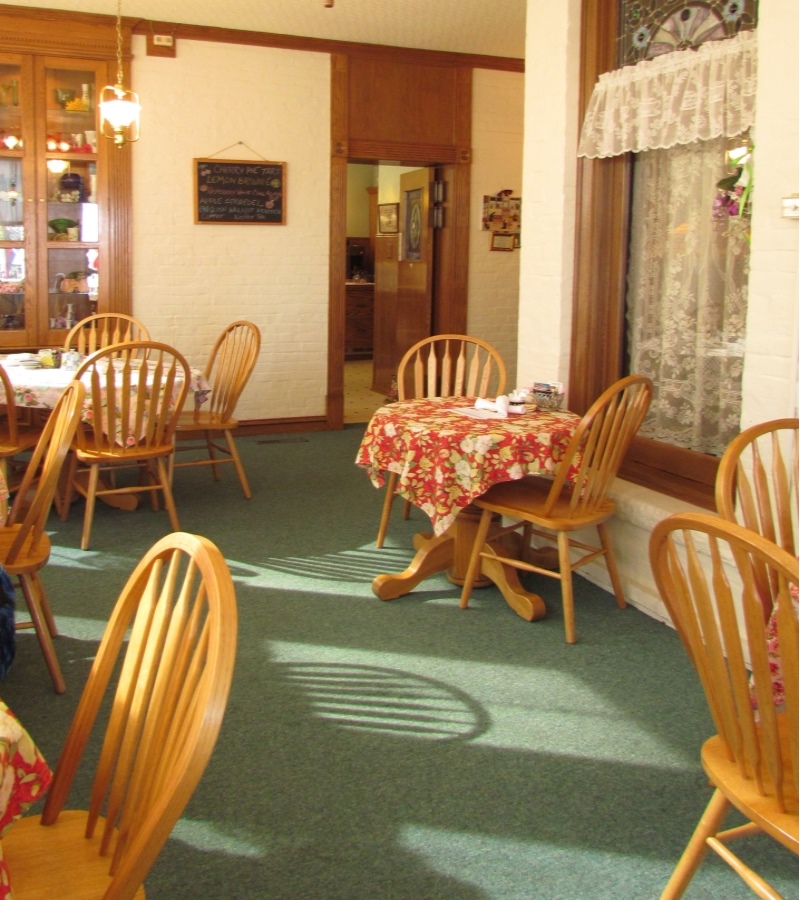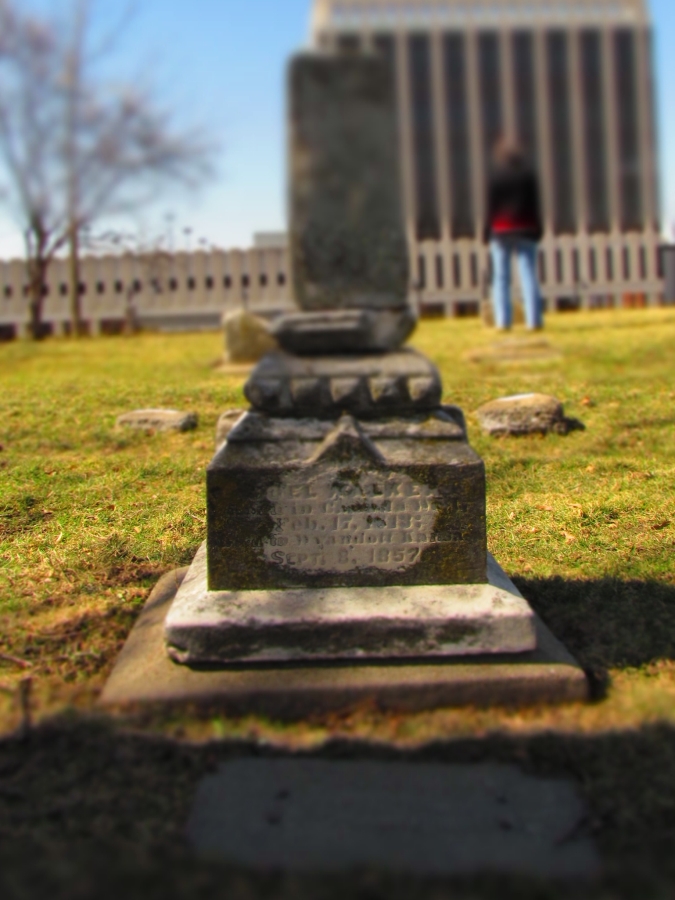Kansas City, Kansas has the distinction of being known as "The Melting Pot of the Midwest". My wife and I traveled to the far eastern edge to learn the history of the Strawberry Hill area. Originally named Splitlog Hill after the wealthy mill owner, Mathias Splitlog. He parceled out the land to emigrant families from Eastern Europe.Here they built a community where they could  worship freely, and celebrate their Slavic heritage. John and Mary Scroggs had a large Victorian style home built in 1887, which overlooks the confluence of the Kansas and Missouri rivers.
worship freely, and celebrate their Slavic heritage. John and Mary Scroggs had a large Victorian style home built in 1887, which overlooks the confluence of the Kansas and Missouri rivers.
The family lived in the residence for 32 years, before selling it to the Sisters of St. Francis of Christ the King in 1919 for the creation of an orphanage. The influenza epidemic of 1918 had ravaged the region, and left many of the children in the community orphaned. As the need increased for more space, four additions were made on the north side of the house. The orphanage remained in existence for 69 years, but was closed in 1988 due to changing social needs. During its years of service, more than 3,000 children have called St. John's home. Soon after the buildings became the Strawberry Hill Museum.
Our tour began in the chapel of the orphanage, where our guide pointed out a variety of items that had been salvaged from neighboring churches. Next we moved into the main house, where the ornate carved woodwork is still prevalent. Some of the fixtures were removed by the nuns, and have been replaced with pieces representative of the style that would have been found in homes of that era. The main floor holds the rooms that would have been used to entertain the family's visitors. These rooms are more decorative than the second floor living quarters. Parquet inlaid floors, ornately carved reliefs, and intricate stained glass windows can be seen throughout the first floor.
The second floor contains the living quarters, including master bedroom, which offers a chance to see how the addition of steam pipes were incorporated in later years. We were surprised to hear that closets were scarcely added in the days the home was built, because they were taxed as though they were living quarters. The third floor holds rooms dedicated to the  various cultures that helped make the Strawberry Hill area a successful community. One of the rooms on this floor remains as it looked when used by the sisters who ran the orphanage. Throughout our tour, our guide told lots of stories related to the house, the orphanage, the occupants, and the community.
various cultures that helped make the Strawberry Hill area a successful community. One of the rooms on this floor remains as it looked when used by the sisters who ran the orphanage. Throughout our tour, our guide told lots of stories related to the house, the orphanage, the occupants, and the community.
At the end of our tour we were offered the chance to visit the Tea Room. This area is part of a wrap around porch, which has been enclosed for convenience. Wooden tables and chairs line both walls, and welcome museum visitors to rest and reminisce of their recently completed tours. Tea and a dessert can be purchased for $5.00 per person. We ordered our delightful morsels and enjoyed more conversation with our guide. During our visit we learned that the museum pulls out all of the stops when decorating for the Christmas season. We made note that a return visit would be needed to engage in the festivities.
We traveled three blocks west to the Huron Indian Cemetery on 7th Street, just north of Ann Avenue. This almost hidden graveyard sits atop a hill overlooking Minnesota Avenue. The name Huron was a derogatory nickname given on the Wyandot Indian tribe by the French. In 1843, members of the Wyandot tribe made their way toward Kansas, after ceding their lands to the government. While they were camped along the Missouri River, between 60 and 100 of them perished from what is believed to be typhoid. Their bodies were carried across the river, and interred on a ridge overlooking the river bottom area.
were camped along the Missouri River, between 60 and 100 of them perished from what is believed to be typhoid. Their bodies were carried across the river, and interred on a ridge overlooking the river bottom area.
In 1844, another epidemic struck the Wyandot Indians, and over 100 more burials were performed in the cemetery. In 1855 tribal status was removed from the Wyandot, and they were declared citizens. All of their lands were seized by the government, except for those deemed as burial grounds. Over the years the grounds have been the topic of many legal battles, many of which were for the purpose of commercial expansion. These plans were fought off in part by the diligence of the Conley sisters, who erected a shack and resided in the cemetery in order to stifle these attempts. Today members of the Wyandot tribe still call Kansas City, Kansas home.
This day reminded us of all of the diverse groups that call Kansas City, Kansas home. Each and every group brings their own cultural, and historical backgrounds with them. We all mesh together to create a vibrant, and eclectic community that we call home.


